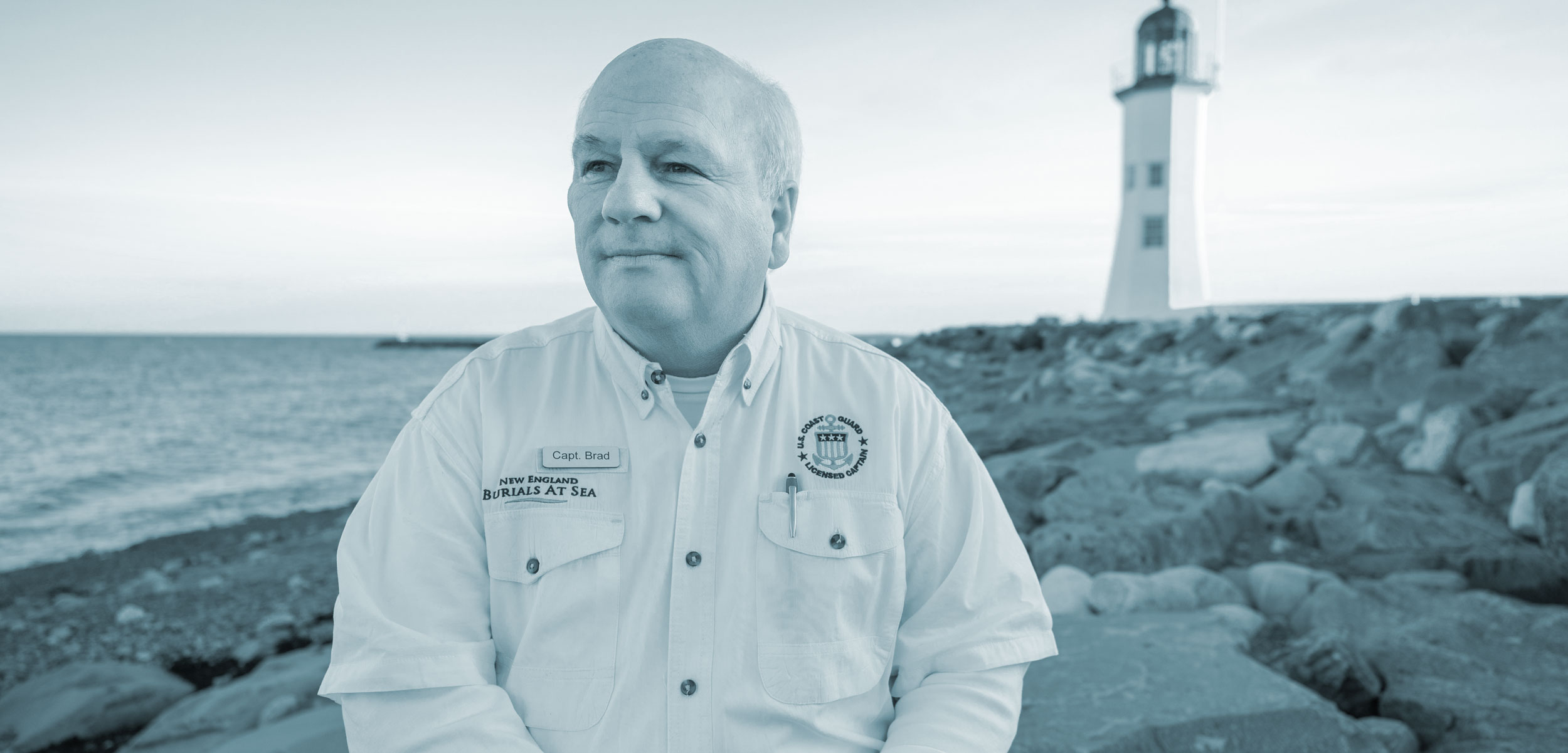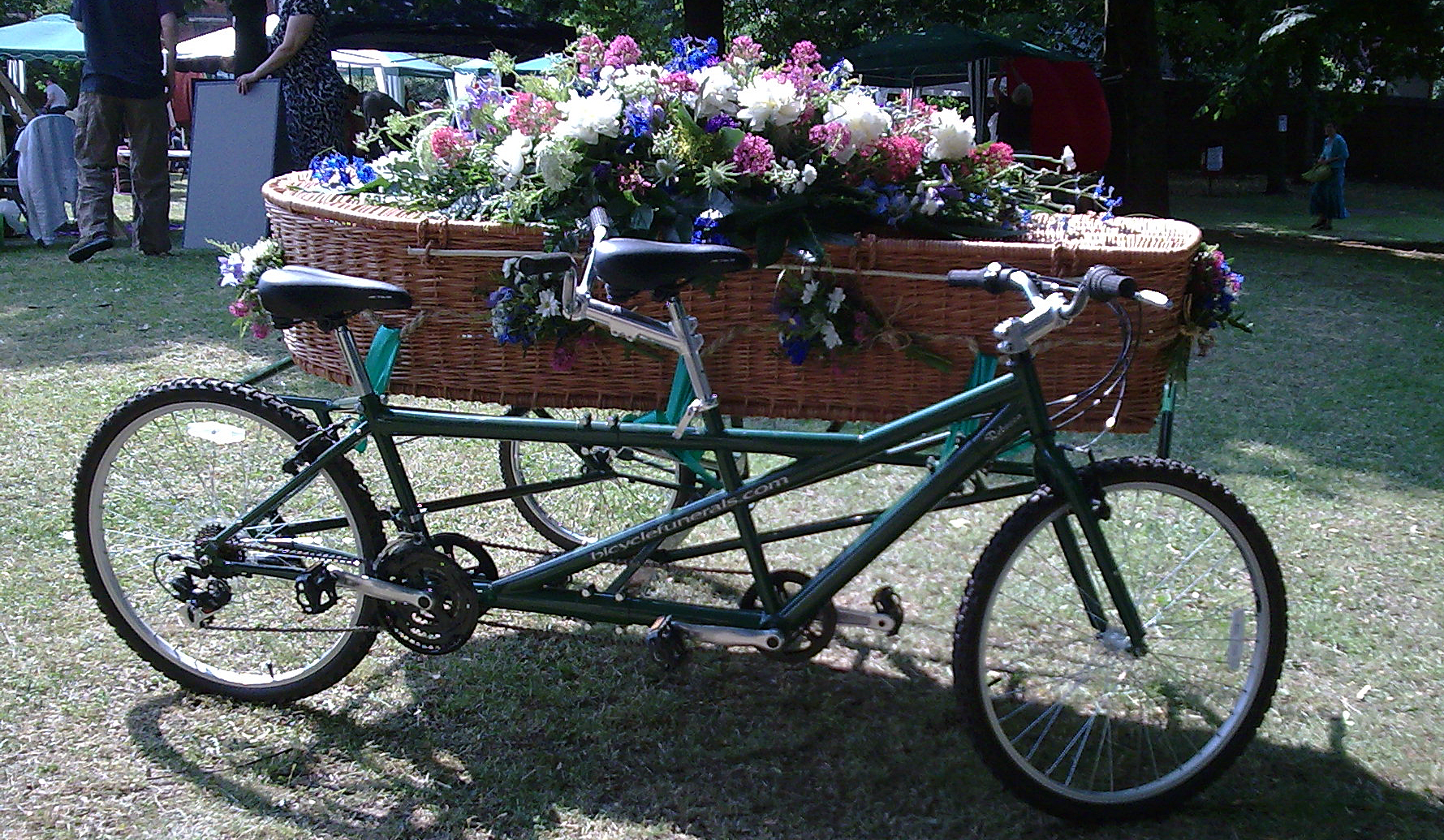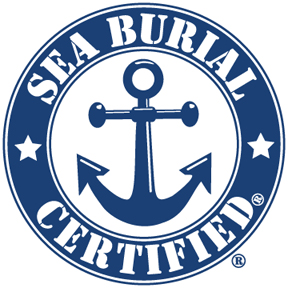
Captain Brad White -- New England Burials at Sea
No, I am not obsessed with burying people. In the 20 months since retirement I've presided at one funeral and I have no desire to do more, or become a "Burying Sam" minister who does "insert name here" services for unchurched folk.
Okay, I will admit that I've written a fair number of blogs on the subject through the years. Alternative vessels for burial including wicker caskets and shrouds and pods. Eco-friendly transportation methods including a bicycle hearse. Planting trees in burial grounds rather than stone markers. Even an initiative to compost the dead...really.

Bicycle Hearse with Wicker Casket!
So it won't surprise you to read that along with "green" burials I've discovered a company does "blue" burials as well -- burials at sea!
Captain Brad White’s (not Captain Highliner) first job was sweeping up at his family’s funeral homes but he moved on to corporate work, eventually buying his boat. Brad was asked by a friend about spreading his uncle's ashes at sea, which led to him founding New England Burials at Sea, a Massachusetts-based company that provides full-body burials and ash scattering services at sea. The company now operates out of 75 ports in the United States.
As Brad describes his business in a Hakai Magazine piece:
The death care industry has changed quite a bit over the years. People don’t want to be embalmed, they don’t want those poisonous toxins in their body. They don’t want to waste hundreds of thousands of feet of wood for caskets and millions of tonnes of steel for burial vaults. They want to be a part of the planet again—they want their body’s energy to go back into the ocean.
We have to be at least three nautical miles [5.6 kilometers] out to sea, except in California, where ashes can be spread 500 yards [457 meters] out. Bodies need to be buried in at least 600 feet [183 meters] of water. We use a burial shroud made from a heavy organic cotton duck fiber and weigh the bodies down with four cannonballs. The family might write messages on the cannonballs or messages in the shroud. We anchor the vessel and have a sea tribute, which includes maritime readings, music, and a flag raising. At the family’s cue, the remains go overboard. We fire off the ship’s cannon, circle to a couple of the deceased’s favorite songs, and then come in. We give the family a certificate showing the date, time, latitude, and longitude.

While this fascinates me, it's unlikely that I'll change my plans from pushing up daisies to pushing up kelp. And my kayak is built for one, so I won't be inquiring about a franchise for Lake Ontario.
As unusual as some of these alternatives may seem, our current practices developed over time and as a clergyperson who presided at more than 500 funerals and memorials through the years, some of our "traditions" border on the bizarre. When I began in ministry in 1980 cremation was not that common, so times and practices do change.
For me it was and still is a matter of dignity and respect in our leave-taking. And it doesn't matter where we are when we affirm our resurrection hope.
Comments? I know you're dying to say something!

Burial at Sea -- Henry Bacon
No comments:
Post a Comment